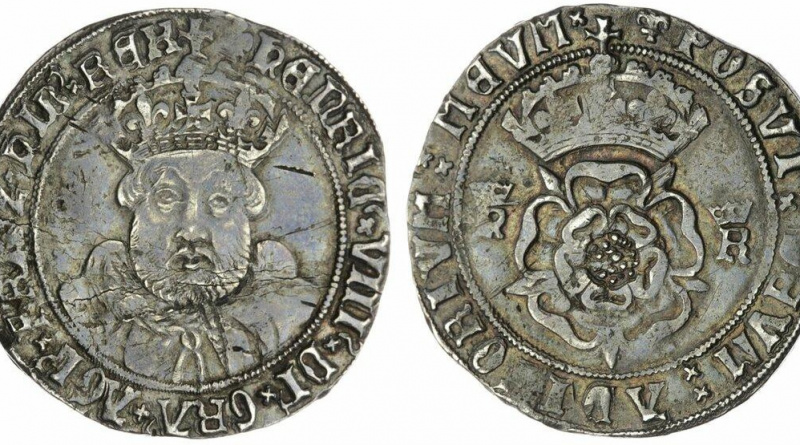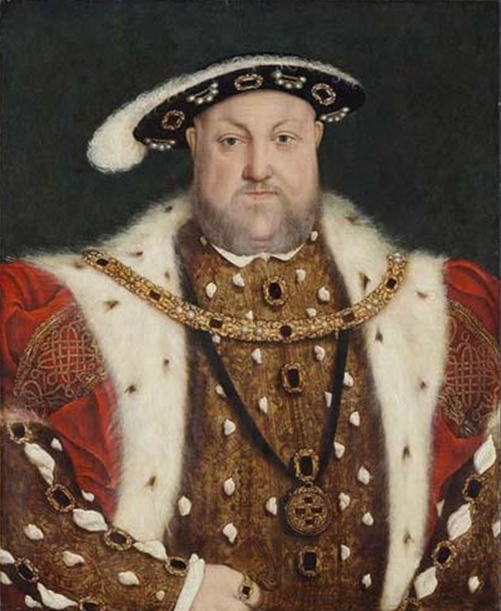Henry VIII, Testoon
Introduction of the testoon
The testoon was the forerunner of the shilling. Although Henry VII introduced the coin around 1489, they were produced in extremely small quantities and were probably patterns, not meant for general circulation. Henry VIII began issuing testoons in large quantities from 1544 and they continued to struck after his death in 1547. They were struck during the period of debasement which saw coins struck with increasingly reduced fineness.
Portraiture
In 1536, Hans Holbein was appointed the English King’s Painter and shortly after that he painted the most famous portrait of Henry VIII. The original was lost when the Whitehall Palace was burnt down in 1698. However, Henry had recognised the power of the image and had encouraged artists to copy the painting as shown in the picture here.
Nobles would also commission copies to show their loyalty to the king and hence this has become the iconic image of Henry VIII. Therefore, it made sense to use this image for this coinage.
Scarcity of testoons
Although the testoon was struck in very significant numbers, its subsequent demonetization and withdrawal in 1548 meant that is is quite scarce today. Of those that survive, many are in a poor condition due in part to the composition of the alloy and wear.


